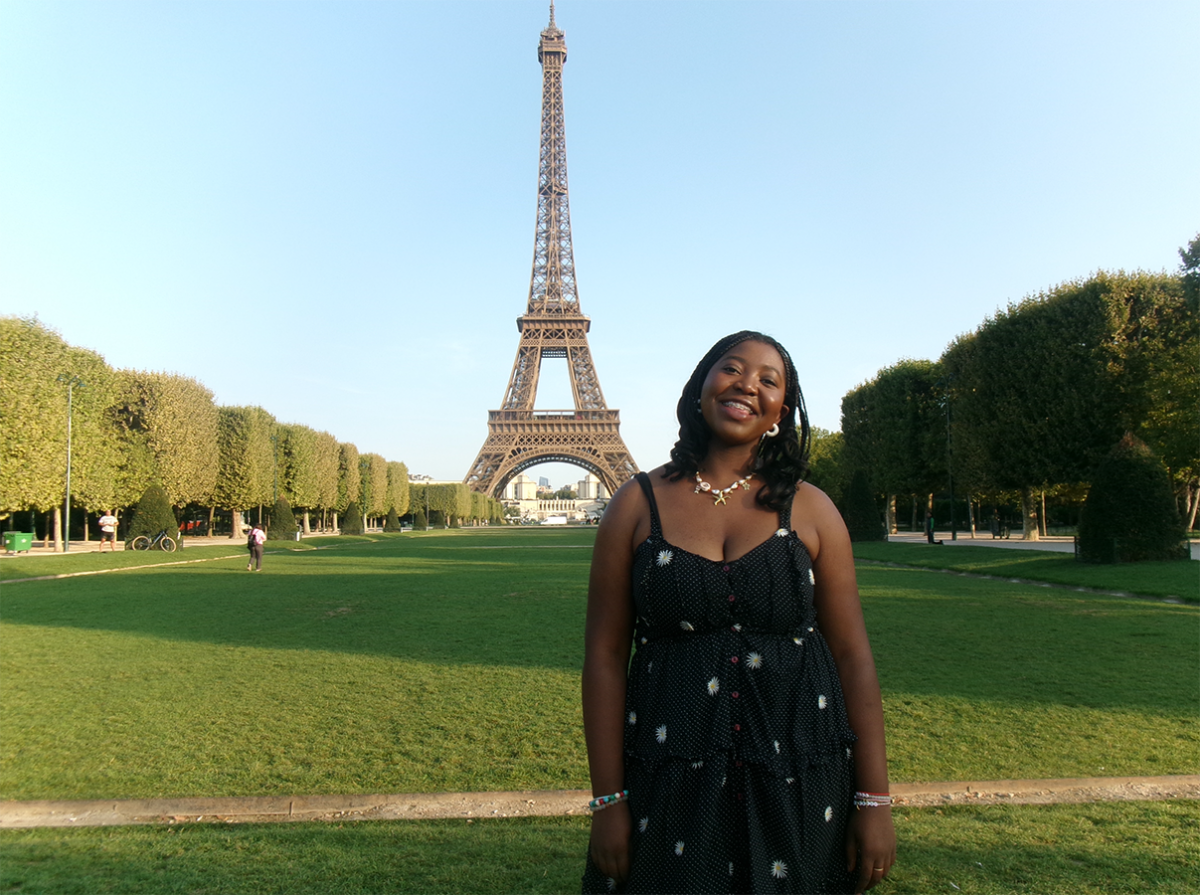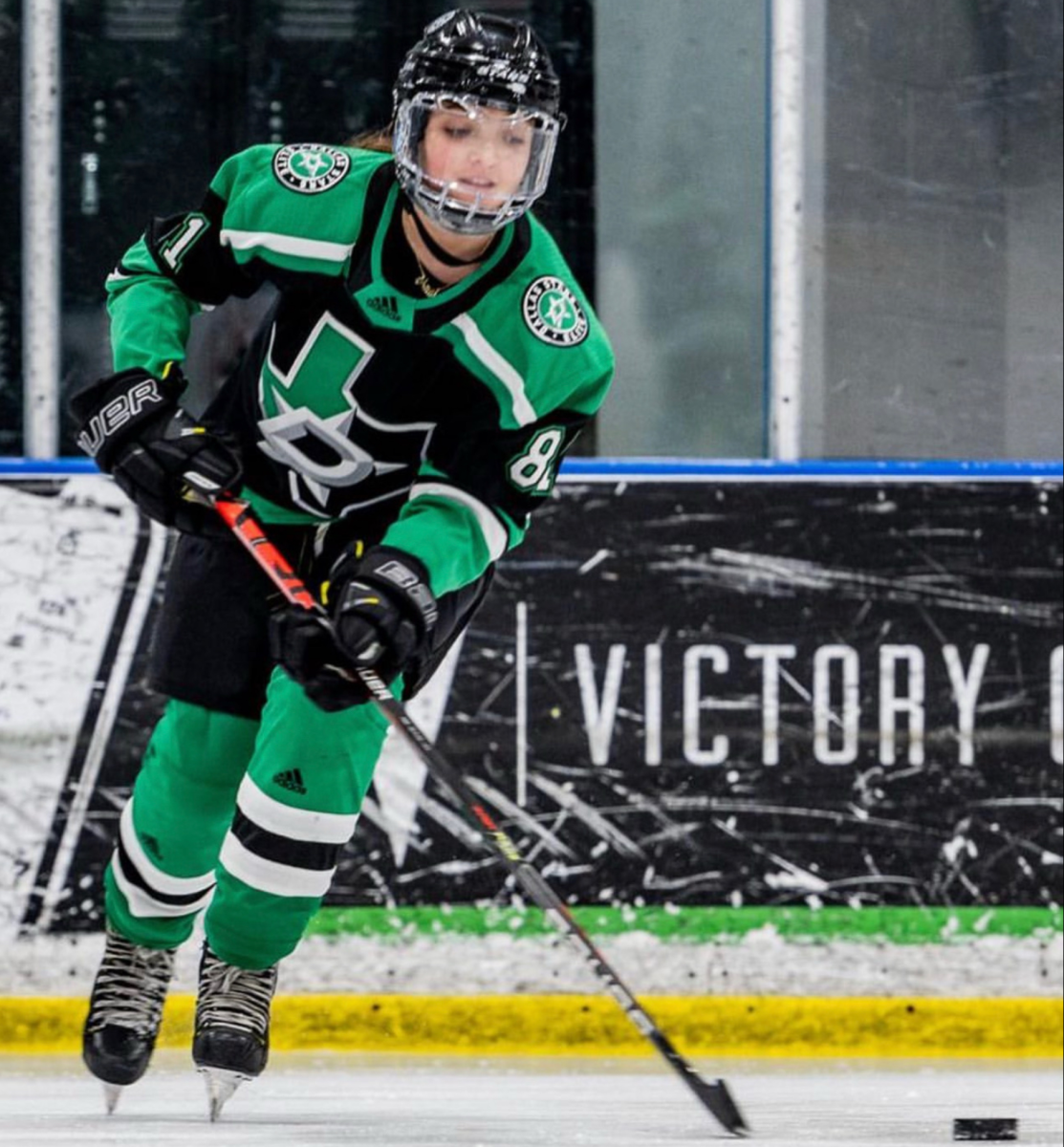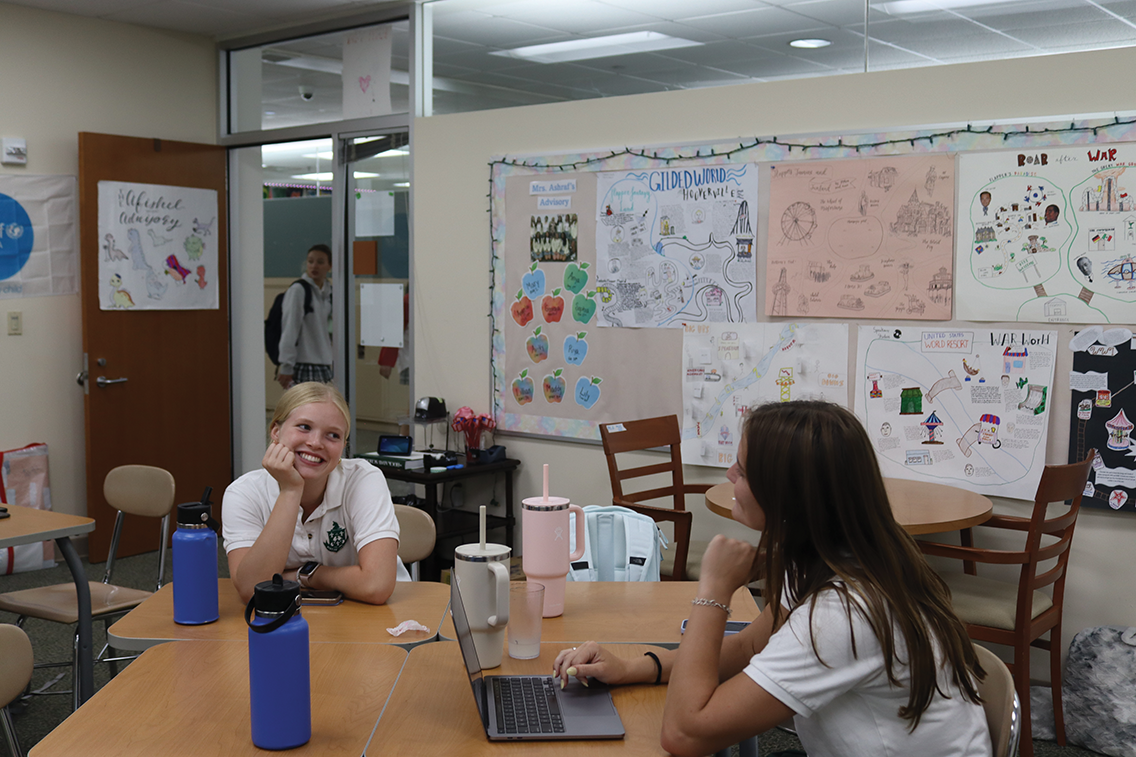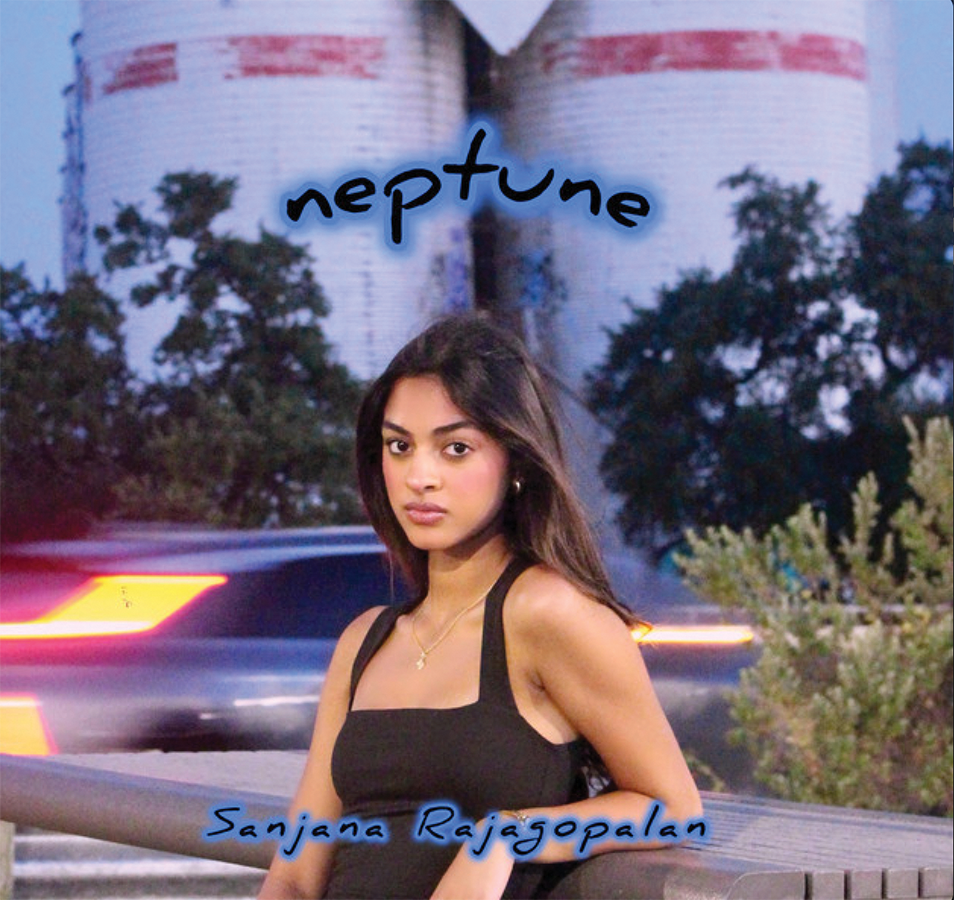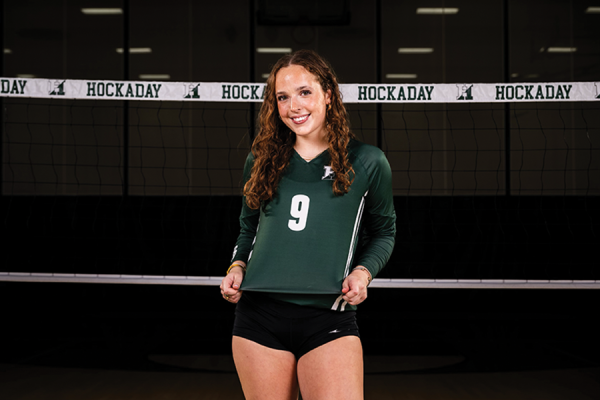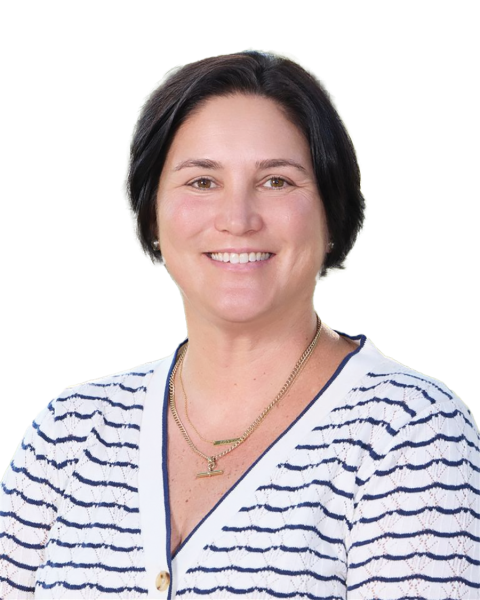Limitless potential
October 20, 2020
Light falls tenderly on my skin while a quiet hum of music floats through my bedroom. Only blackness lays beyond my window, but the soft light of lamps, fairy lights, and candles envelops and protects me. Surrounded by an explosion of makeup I’ve accumulated in the past few years, I sit on the ground and stare at myself in the full-length mirror, adorning my face with bright pigments, harsh lines, exaggerated shadows, and glitter that still catches in the low light. I am no longer myself, but a caricature of a ‘woman’. I don’t know the person looking back at me. They are a lie. Exploring makeup revealed to me how my assigned gender was nothing more than an arbitrary label related to my reproductive organs. Gender is no more of a truth for me than when I perform Shakespeare or sing in a musical. My gender exists only as a performance.
I am non-binary. I use they/them/ theirs pronouns. That means that I neither consider myself a girl nor boy, just a person trying to navigate life. Pursuing happiness, love, fulfillment, challenge, all of that. I simply see no reason to sort myself into one of two categories when neither of them feels quite right.
This is the first year I’ve been out as non-binary, and I’m still trying to unlearn things that have been pushed on me as a girl. For instance, I tend to present in a more feminine way, often inadvertently. I am plus size which means that my access to clothes that fit me is limited, so I often opt for loose and flowy clothing—like dresses. On top of that, I’ve grown up with Society shoving beauty standards down my throat, ingraining in my mind that fat will never equal beautiful, always pushing me to do more. Accentuate my bust, my hips, my waist—all the things I learned to equate with femininity. And when it comes to our uniforms, while I don’t detest the plaid skirts, I don’t even have the option of wearing Hockapants because they don’t manufacture them in my size. All these limitations and roadblocks, while subtle, limit my capability for self-exploration and self-expression.
Shifting from public school to Hockaday altered my perception of pre-set expectations—when I came here in sixth grade, I expected everyone to straighten their hair and do their makeup every morning. But they didn’t. I felt liberated. I could raise my hand in math class without some snotty boy telling me I was wrong, or that my question was dumb. I could laugh freely, hug my friends and exist without fear of how I would be perceived. My queerness was never a secret to me, even then, and I recognize how fortunate I am to have never been scared about coming out to my family. I knew that I liked girls to some degree, and I also recognized that my tendency for feminine presentation was already somewhat forced. Seventh grade started and I cut off all my hair. I had an awful buzzcut on the sides and a broccoli-type tuft on the top. It was not a good haircut. But still, I noticed that as soon as I looked like that, some of my classmates wouldn’t make eye contact anymore. Or they’d whisper. Or they’d get uncomfortable and move away from me in the locker room before PE. I thought, “Maybe it’s just because I’m not like other girls!!!” But I knew, whether intentionally or not, my peers noticed that I outwardly looked queer, and any time I felt brave enough to share that part of me, the people around me reacted negatively. So I hid it.
My hair grew out and I got a boyfriend, immediately noticing a change in the way people interacted with me. Finally, people were willing to see me! To hear and acknowledge me! Yet still, I felt hollow. Freshman year, depression fell over me with immobilizing weight. Anxiety spread through my core and into my bones. Late nights crying became my new normal, gazing into the mirror with loathing became second nature. I told myself I felt this way because of a bad breakup. But a year passed, and I still couldn’t look at myself the same way, couldn’t find the motivation to interact with the world. The only times I felt peace were during summer while I sequestered myself in the woods on backpacking trips. Why on earth did I like it? Hiking is incredibly strenuous, and I’ve never been that fit.
When I was in the woods, I never had to force myself into a uniform. In the woods, I didn’t worry about being pretty, or how people perceived me—I only cared about carrying my backpack and taking another step. I wasn’t a girl anymore, just a person. That became my truth, only feeling real while surrounded by trees and earth. But illusions, and backpacking trips, can only last so long. Eventually I’d end up back in Dallas, wearing a plaid skirt and sitting at my school desk. The safety, warmth, and life that surrounded me during the summer drained into nonexistence as I morphed back into my Hockaday persona. Put on the costume, Leah, put on the uniform.
Queerness at Hockaday is shunned. Some might disagree, but until you have been queer at Hockaday, you cannot understand the isolation and overall awareness that you are “other.” The heartbreak my queer friends whisper of only in the safety of 2 a.m. Facetimes or sleepovers. Being shoved kicking and screaming back into the closet by parents threatening not to help you through college. Realizing what friendships might end if you tell the truth about who you are.
The LGBT community exists at Hockaday. That is a fact, and I’m done hiding. The possibility of life beyond the binary is particularly difficult in an environment defined by it. Organic life inherently defies binary—it is impossible for us. Terms like ‘man’ or ‘woman’, ‘gay’ or ‘straight’ exist for people to compartmentalize, to sort out their reality. But there is so much more to life than choosing one thing or the other. Even biological sex exists on a spectrum. Another person with a uterus may have more testosterone than I do, and some people have testes in place of ovaries. Life overflows with variation, so to shove people into the mold of a “Model Hockaday Girl” does less to develop “the limitless potential of girls” and more to suppress the growth and realization of students’ individuality.




